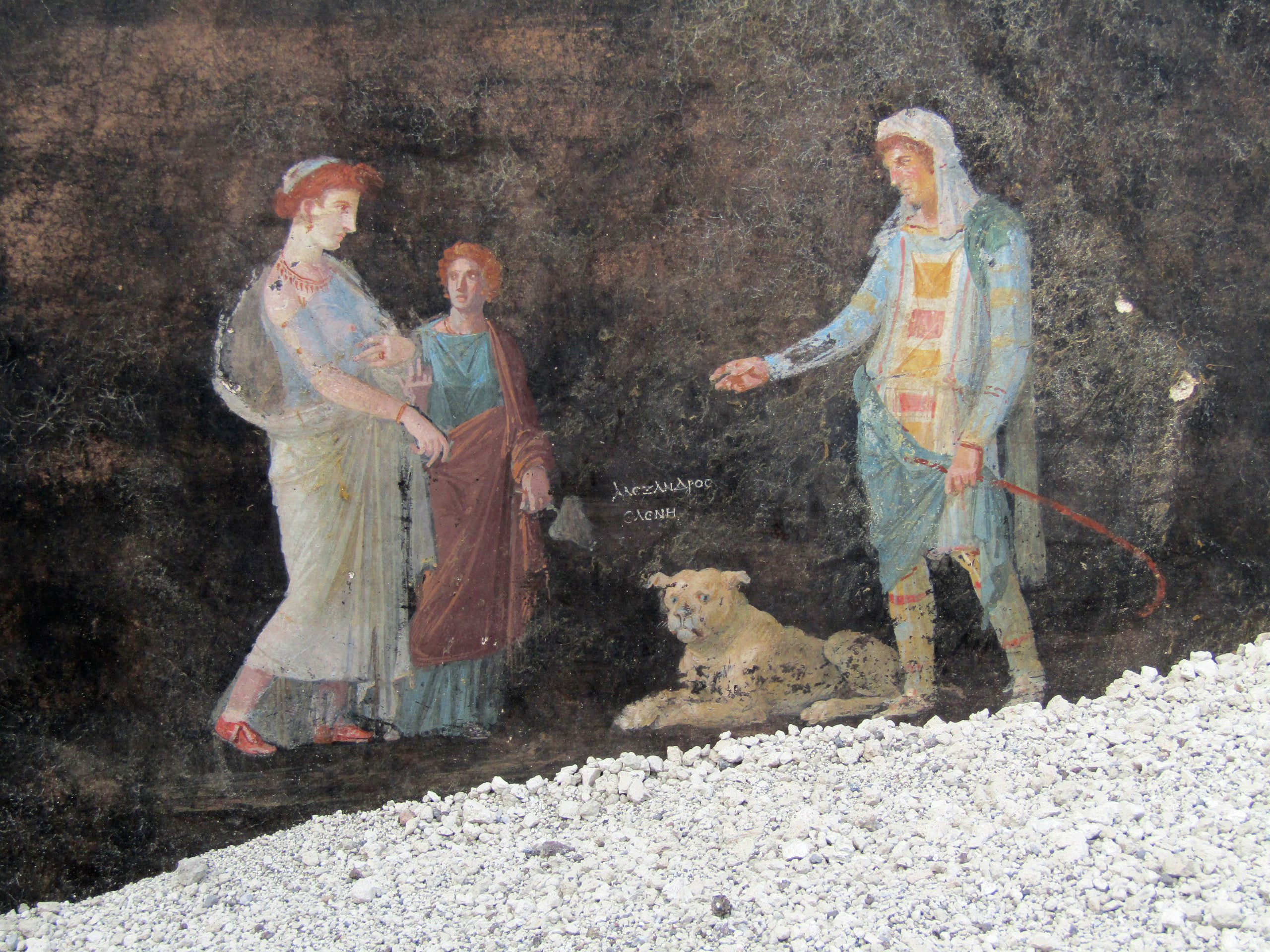Pompeii: Stunning new paintings unearthed at ancient buried city
Elaborate frescos depicting Greek legend Helen of Troy and the god Apollo have been uncovered in new excavation

Fascinating artworks have been uncovered in a new excavation at Pompeii, the ancient Roman city doomed and buried by Mount Vesuvius’s deadly eruption in AD79.
The most impressive discovery is an expansive fresco that depicts the Greek legend Helen of Troy, painted on the high walls of a large banqueting hall that was thought to be owned by a high-status politician.
One-third of the lost city is still yet to be cleared of volcanic debris, ash and pumice, but the current dig has led to the discovery of artefacts that underline Pompeii’s position as a bastion of the Roman Empire.
The banqueting room was discovered to hold several frescos, including two set-piece frescos. In the first piece, the god Apollo is seen trying to seduce the priestess Cassandra – but according to legend, her rejection of his pursuits led to her prophecies being ignored. The tragic aftermath of that rejection is depicted in the second painting, which sees Prince Paris meeting Helen – a union Cassandra knows will end in the Trojan War and doom them all.
The remains of the dining hall are without a ceiling or roof, since it collapsed during the eruption. What’s left is tall black walls, on which the frescos are painted.
The room is the most impressive hidden treasure to emerge from the excavation that began 12 months ago, and it will feature in a documentary series from the BBC and Lion TV to be broadcast later in April.
Archaeologists and restorers have installed scaffolding and temporary roofing will be going over the top, and plaster glue has been injected into the walls to prevent the frescoes from peeling away.
The current excavation area, referred to by experts as region nine, has thrown all sorts of discoveries – they located what is thought to be a bakery and a laundry near the building where the grand dining room is located.
The only skeletons from the dig have been discovered in the bakery; two adults and a child who were crushed by falling stones. It is thought that they may have been slaves who were trapped and could not flee the eruption.
The identity of the high-status individual who owned the building behind the bakery and laundry is hinted at in numerous inscriptions on the walls with the initials “ARV”, which archaeologists think is a reference to a wealthy Pompeii man called Aulus Rustius Verus.
“We know him from other political propaganda in Pompeii. He’s a politician. He’s super-rich. We think he may be the one who owns the posh house behind the bakery and the laundry,” park archaeologist Dr Sophie Hay told the BBC.
“When we excavate, we wonder what we’re looking at,” explained co-lead archaeologist Dr Gennaro Iovino.
“Much like a theatre stage, you have the scenery, the backdrop, and the culprit, which is Mount Vesuvius. The archaeologist has to be good at filling in the gaps – telling the story of the missing cast, the families and children, the people who are not there anymore.”
Subscribe to Independent Premium to bookmark this article
Want to bookmark your favourite articles and stories to read or reference later? Start your Independent Premium subscription today.

Join our commenting forum
Join thought-provoking conversations, follow other Independent readers and see their replies